Bryan Pearson's Blog, page 9
April 13, 2018
Lions Of Retail: 8 Surprising Brands Coming On Strong In 2018
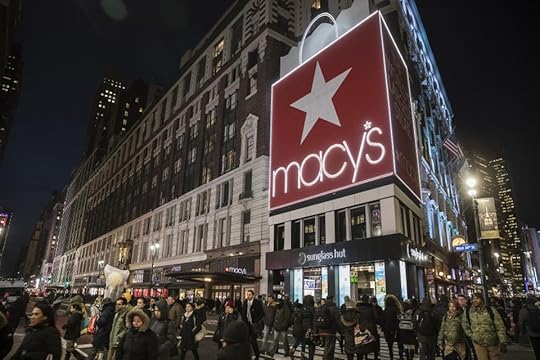
Macy’s has proven it can get back on its feet even after a hard hit: In February it posted its first sales gain in three years. (Photographer: Victor J. Blue/Bloomberg)
It’s April, and the lambs of retail are baring their teeth.
Shoppers may be dazzled by the recent innovations marking the retail calendar, from Amazon’s same-day delivery to Walmart’s potential drones, but behind the scenes, a group of less flashy merchants has been gathering strength.
Some are niche startups while others have been around quite some time. All are using shopper analytics, brand experience and pure practicality to gain a foothold along a retail outlook that shifts like the wind.
Following, across a variety of sectors, are eight lions of retail.
1. Department store: Macy’s
Like a prizefighter, Macy’s has proven it can get back on its feet even after a hard hit. In February it posted its first sales gain in three years, triggering an almost immediate about-face in expectations.
The enthusiasm is largely driven by Macy’s turnaround strategy, called North Star. An essential part of the five-point plan, which includes emphasizing exclusive brands and digital experiences, is using its shopper data to make smarter investment decisions. In keeping with this last part, Macy’s in October 2017 revamped its Star Rewards program with the goal of attracting new customers and increasing spending among the 10% of shoppers who generate half its sales.
2. Supermarket: Albertsons
Kroger Co. may be the nation’s supermarket leader, but Albertsons is matching its shopper outreach efforts step by step. In March, the parent of Safeway and Van’s announced plans to form a digital marketplace for startups and small brands, recognizing many of its shoppers prefer them. The data collected through the marketplace will enable Albertsons to better understand and communicate with shoppers across regions.
Meanwhile, on the increasingly competitive wellness front, it has agreed to buy Rite Aid, and appointed former Starbucks CEO Jim Donald to oversee the merger.
3. Club: BJ’s Wholesale Club
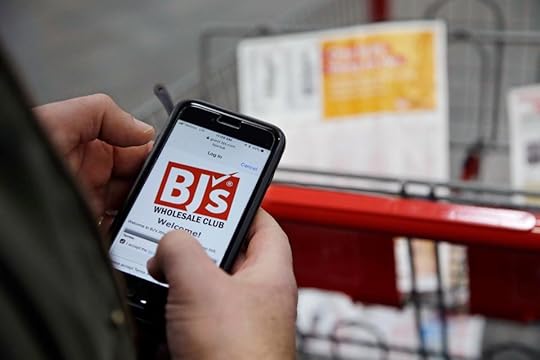
The BJ’s Express Scan app (AP Photo/Stephan Savoia)
This regional membership club is not dithering over how to compete with Amazon and its fast delivery options. In March, BJ’s expanded its partnership with Instacart to offer same-day delivery nationwide by the end of April. It’s one of a series of technology adoptions by the chain, including a mobile app with a digital couponing feature and pickup-and-pay for two-hour online fulfillment. In February, BJ’s hired its first vice president of digital commerce and experience — a month after Walmart abruptly closed 63 Sam’s Club locations.
4. Specialty: Five Below
This teen- and tween-focused retailer combines the dollar-store model with fast fashion. All items in the store, from phone chargers and comic books to decorative floor pillows and sundresses, are priced $1 to $5.
While other specialty chains are struggling against online competition, Five Below benefits because most members of its young target market do not yet have credit cards, so they prefer going to physical stores. Five Below’s 2017 performance proves this point: In the fourth quarter, it posted a 30% sales gain as its store base for the year expanded by 20%.
5. Online: Boxed
Founded in 2013 as the solution for easy bulk ordering, this online merchant became more of a household name after attracting a takeover bid by Kroger, which it rejected in January. Described as a “Costco for millennials” who might not have the time or means to get to the store, Boxed sells household items, from Cheerios to paper towels, in large quantities at low warehouse prices. And it does so without membership fees. Two-day shipping also is free (on orders of $49 or more). As a bonus, it gives customers 1% in cash rewards on all purchases.
6. Third-party delivery: Deliv
Borrowing from the Uber model, this delivery network takes advantage of GPS-enabled smartphones to mobilize its group of drivers, creating a crowd-based delivery network. Now in 35 markets, Deliv is considered one of the most successful same-day, last-mile delivery services, with a roster of retail clients that includes Macy’s, Walmart, Best Buy, Giant Eagle and PetSmart. This list reflects the diversity of Deliv’s capabilities, upon which it is building: In February, it introduced Deliv Rx, for same-day delivery to and from pharmacies, hospitals, medical device companies, veterinarians and others.
7. Value: Aldi
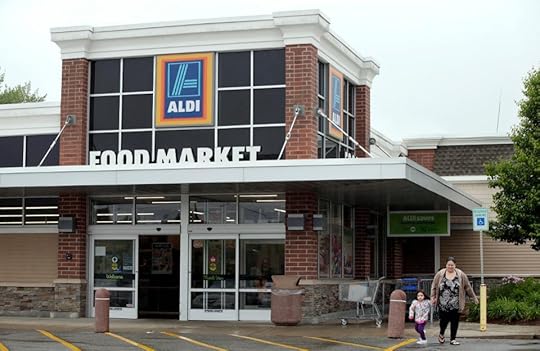
When it comes to protecting its turf, this low-frills German food chain doesn’t scrimp. (AP Photo/Elise Amendola)
When it comes to protecting its turf, this low-frills German food chain doesn’t scrimp. As its rival Lidl laid plans to enter the U.S. in 2017, Aldi wasted no time going on the defensive. It added organics and natural foods and is remodeling stores and building new ones — while keeping prices low.
Meanwhile, it is stretching outside of its traditional skin and testing grocery sales at a limited number of Kohl’s stores. Importantly, Aldi made these changes with U.S. rivals like Whole Foods in mind.
Lidl, meanwhile, appears to have focused on Aldi and struggled in its U.S. entry. The CEO told a German magazine that his company would pull back on expansion plans.
8. Retail services: Happy Returns
Like Boxed, Happy Returns was created expressly to eliminate a key pain point in the retail experience: the return process. Happy Returns operates as a network of “return bars,” where online shoppers can bring back purchases from participating brands including Everlane, Tradesy, Mizzen and Main and Trew. The service, available in roughly 75 locations at partnering malls and stores around the country, is free and does not require receipts, saving shoppers a little more time. For partner merchants, the service translates to foot traffic and potential sales they otherwise would have missed.
For shoppers, these eight lions of retail represent the industry’s dedication, and ability, to manage change. Let’s hope many other retailers will roar through 2018 as well.
This article originally appeared in Forbes. Follow me on Facebook and Twitter for more on retail, loyalty and the customer experience.
April 3, 2018
Maturing Gen Z Is Dumping The Mall; Here’s How To Catch Them
Retail brands and fashions come and go, but one trend shopping mall operators should never take for granted is this: 16-year-olds are gaining influence, and they can have long memories.
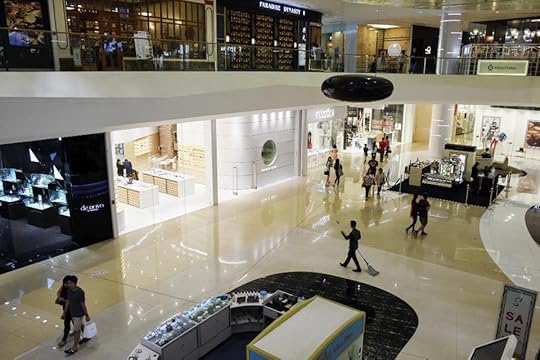
Photographer: Carlo Gabuco/Bloomberg
This fact is coming back to haunt many shopping centers and their retail tenants. The oldest members of Generation Z, who in recent years have faced mall curfews, purchasing limitations and predictable store lineups, are fast maturing into adults and they’re applying their formative shopping lessons to their purchase decisions.
More than half of adult shoppers, 54%, shop at malls less often than they did five years ago, according to a January survey by the market research firm Morning Consult. Among those ages 18 to 29, 38% said they shop malls less now than one year ago, while 40% said they shop more now than a year ago, an uncomfortably close split.
Members of Gen Z, those born around 1995 and later, fall in this group — the oldest now approaching their 23rd year and making substantial lifestyle spending decisions. The findings indicate these young adults are still interested in the mall, but are at risk of being lost. Maintaining their interest, fortunately, is not a lost cause.
Bye-bye, Claire
The burden is on mall operators, not just their tenants, to remain relevant to this age group. Recent retail troubles suggest they struggle to do so.
Store closures are expected to rise to more than 12,000 in 2018 from about 9,000 in 2017, according to Cushman & Wakefield, a marketing and data analysis firm. Recent reports support the outlook: Shopping mall regular Claire’s, a youth jewelry chain, has filed for Chapter 11 bankruptcy protection, and so have Bon-Ton department stores and Toys “R” Us, which is liquidating all its stores.
The challenge for malls is finding replacements that attract young shoppers, who actually do like physical stores. A 2017 study by IBM and the National Retail Federation found 67% of Generation Z shoppers prefer to make most of their purchases in-store. What’s unclear is if that store is American Eagle Outfitters or Sephora.
What is clear is the split between certain destination malls and the run-of-the-mill historical mall experience. Claire’s, in its bankruptcy filing, cited data that traffic to malls has declined by 8% in the past year.
Gen Z shoppers want the stores they shop to offer engaging experiences, and that expectation extends to the malls that encase them. Malls that offer little more than storefronts and food courts are being upstaged by entertainment-themed centers that feature live events and activities, from rock-climbing walls to ski slopes.
Shopping malls that sport such attractions generate something more important than sales when it comes to capturing Gen Z — they generate stories.
Stop Generating Zs — 4 Steps
Not all malls can install ski slopes, but they do have some power to recapture the interest of wavering Gen Zers. Here are four steps shopping centers can take to remain relevant.
Stop boring them. The mall is asking for too much, in terms of time, if all it offers is shopping. Further, the predictability of standard brands, food courts and water features make repeat visits routine, not exciting. The mall should serve as a portal through which a stream of activity flows; it should act like a community. Yet just 19% of 18- to 29-year-olds in the Morning Consult study used the word “community” to describe malls. The same elements that make neighborhoods vibrant, such as art, farmers markets and locally sponsored events, can enliven a mall.
Treat them like (young) adults. Teens typically do not have credit cards, which limits their power as consumers. Merchants can provide them more spending power, and responsibility, by promoting app-enabled layaway programs that allow them to set their own payment schedules. Indoor purchase-pickup kiosks (for home shopping) can include interactive screens that show what’s happening at the mall, games or makeover stations. Other brand experiences that feel mature but are age-appropriate, such as cooking classes or dress-for-success events, should encourage young shoppers to come back.
Get them a paycheck. Teen employment has steadily declined for nearly 40 years, according to a story in the Wall Street Journal, citing the U.S. Bureau of Labor Statistics. Teen participation in the labor force fell to 43% in July 2016 (a big summer job month), compared with its peak of 72% in 1978. Closing stores do eliminate job opportunities, but emerging services such as online order pickup can introduce new ones. Importantly, those who work at the mall can stay after hours to shop. Malls also can host job fairs and other events to attract young adults and foster positive feelings.
Change the name. It’s simple, but apparently it works. A number of shopping centers have just dropped the word “mall” from their names and replaced it with “center,” “shoppes,” “square” and “village.” These alternate terms generate a sense of social interaction and the promise of experiences, which is important to members of Generation Z.
But really, such elements are important to all ages, as is the desire to be respected. For Gen Z, all that requires is recognizing their potential, not just as consumers but also as people who will shape the future of the retail industry. If malls can do this, Gen Z will remember.
This article originally appeared in Forbes. Follow me on Facebook and Twitter for more on retail, loyalty and the customer experience.
March 29, 2018
3 Reasons West Elm’s Selfless Marketing Is Worth Watching
A new share-the-wealth strategy by home furnishings chain West Elm may prove that one of the most effective ways to win shopper loyalty is by sending them elsewhere.

(Photo by Jared Siskin/Patrick McMullan via Getty Images)
The Brooklyn-based merchant is inviting its shoppers to spend time and money with nearby artists and entrepreneurs to learn new skills and support the community. The limited-time project, which will begin April, promotes the merchant’s mission to champion community-based businesses. And in doing so, it’s promoting its own authenticity among key shopping segments.
“We’re transforming how we’re interacting with our customers, interacting with them outside the four walls of our store,” Mo Mullen, director of West Elm Local, told USA Today.
West Elm evidently has its ear to the wall regarding shopper soft spots. Seven in 10 consumers believe businesses are obligated to help improve issues that may not be relevant to their everyday operations, according to research by Cone Communications. More than three-quarters of Americans will shop with a brand based on its actions.
This means that selfless merchandising, which is what West Elm is promoting, requires the buy-in of the shopper. But so does loyalty, suggesting West Elm has tapped a vein that connects the two: Be loyal to us, they hint, and we’ll selflessly help your hardworking, local friends.
Buying (and Selling) Local
It’s not entirely selfless, of course, but West Elm, a branch of upscale kitchenware merchant Williams-Sonoma, is well practiced in stewardship. Its selection of modern furnishings, almost all of which is designed in-house, are described as organic, sustainably sourced and, since 2014, fair trade certified.
Community building is a cornerstone of its brand philosophy, according to its website: “We’re … committed to making a difference, both locally and globally. This means carrying products from local makers, empowering store managers to tailor their own inventory and improving the lives of the handcrafted artisans we work with.”
In 2013 West Elm introduced its Local program, through which West Elm’s U.S. stores each feature the goods of nearby makers. The program now includes about 800 such artisans, with a goal of reaching 1,000 by 2020.
Now through its Local Experiences program, West Elm is setting up workshops in five cities and sending local shoppers to visit the artisans and entrepreneurs there. Visitors can learn woodworking and make a tasting tray in Detroit, or participate in park sketches and a walk in the historic area of Charleston, S.C. The events are not free — they run $130 to $250 — but the fees help support the local providers.
All of these endeavors are designed so that West Elm shoppers can make positive change, meaning the brand basically assigns them an active role in its mission.
Learning From Toms, Kroger, REI
It’s a thoughtful strategy. When shoppers invest in a purpose through a brand, they are likely to become invested in the brand itself. It is a quality retailers should not underestimate, as technology gives consumers more control of their options and enables scrappy startups to better compete.
Here are three reasons why West Elm’s efforts are worth watching.
Shoppers lean toward do-good brands. Altruism was once considered a bonus brand feature, but now more shoppers expect it, thanks in part to the success of companies such as Toms, which gives a pair of shoes to a child in need for every pair it sells. According to the Cone Communications’ 2017 CSR Study, 87% of consumers would more likely trust and be loyal to a company that supports a social or environmental issue, and a similar percentage think it is important for a company to invest in community causes. More than a third of shoppers, 34%, ranked economic development as the top issue they want companies to address.
Startups touch a soft spot. There’s a track record of shoppers preferring to buy from retailers that support local startups. Sales of locally sourced foods, for example, are expected to reach $20 billion in 2019, from $12 billion in 2014, according to the research firm Packaged Facts. This may be why the supermarket chain Kroger in September launched its We Are Local initiative, where community suppliers can pitch their products directly to a company buyer. By underscoring its local initiative (Kroger already sources from thousands of local suppliers), the chain is distinguishing itself as a big company with a big heart for small players.
The pay-it-forward effect. When a brand invests in its community consistently and with visible results, local shoppers with similar interests are likely to get on board. In fact, many want an opportunity to do so — 69% of millennial shoppers would like businesses to make it easier to get involved in societal issues. Note that “community” could transcend physical space to include shared interests and cohorts. The outdoor clothing and gear retailer REI has invested nearly $80 million in nonprofits dedicated to creating access to the country’s trail network and similar outdoor recreation spots. Not all may be within walking distance of a store, but to its shoppers, they are an essential part of a broader community.
What these efforts have in common is they leave an imprint on the consumer wherever he or she goes. West Elm may send its shoppers elsewhere to learn how to weld, and REI may encourage people to spend more time outdoors and less in its store, but the essence of the brands linger with shoppers wherever they go. Those are connections that spread the wealth.
This article originally appeared in Forbes. Follow me on Facebook and Twitter for more on retail, loyalty and the customer experience.
March 27, 2018
Walmart Is Going Upscale, But It Doesn’t Mean What You Think
When Walmart called on Lord & Taylor, we should have known it was not to cry “uncle.”
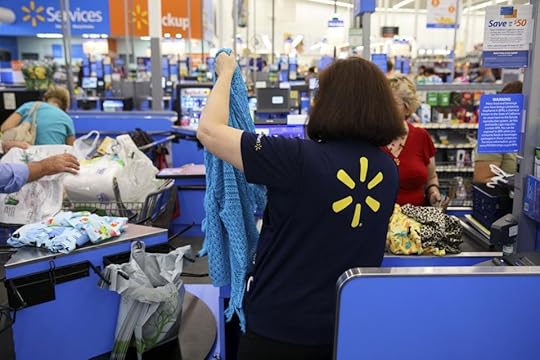
Photographer: Patrick T. Fallon/Bloomberg
With a selection of aspirational new apparel brands, a redesigned online home section and alignments with big names like Bonobos and, yes, Lord & Taylor, Walmart appears to have assembled a strategy for winning style-conscious shoppers while maintaining its price-conscious core. It has also evidently determined the right balance of flair vs. functional for competing with Amazon and Target.
The goal may make sense, but it’s not guaranteed. Walmart wants more upscale, fashion-focused shoppers for their individual sales gains and the bigger basket each one could generate. However, it’s gotten lost on this path before. In 2005, Walmart’s Metro 7 fashion brand tanked; later designer lines with Max Azria and Norma Kamali also withered.
What makes this run different is Walmart appears to be applying lessons from the past to a potentially more open-minded market base, thanks to a fashion world cracked wide open to the masses by technology.
Could its latest blend of fashion actions cause people to refer to the low-cost leader as “Walmarché?” History will tell.
From Faded Glory to Time and Tru
Let’s start that history with how Target changed low-priced retail. In 1999, Target penned a designer deal with the architect Michael Graves, triggering a wholesale change in what people could expect from value shopping. It was the first of more than 75 deals in which well-recognized designers, from Isaac Mizrahi to Lilly Pulitzer, developed exclusive and affordable lines for Target.
At that time, Amazon had just begun expanding beyond books and had yet to make a profit. Walmart, meanwhile, focused on its reliable model of high volume, low prices and low frills (including in its clothing). While Target posted 1999 revenue of $33.7 billion and Amazon of $1.6 billion, Walmart counted sales of $156 billion.
Technology has enabled unprecedented speed and opportunity, however. Amazon in 2017 ranked as the seventh-largest retailer in the nation and in December posted sales of $178 billion. The shoppers may not be exactly the same, but Amazon has enough scale to give giant rivals a case of the nerves. Target has, for instance, been reviving its private labels.
Walmart has little choice but to claim its own territory, and then some.
So in the past year, Walmart has purchased the niche brands Shoebuy, ModCloth and Bonobos, and in October entered into a partnership with Lord & Taylor to feature its apparel online. In February it launched four private labels for women, men and children — Time and Tru, Terra & Sky (plus-size), Wonder Nation (kids) and George (men) — with a kicky TV advertising spot that conjures images of family vacations and breezy living, not price comparisons.
On the home front, Walmart is expanding its furnishings at Walmart.com to include upscale-looking, trendier styles from rustic to Scandinavian (hear that, Ikea?). It’s the first step in a broader refurbishing of Walmart.com, which will better showcase apparel later in 2018.
The stores will be refreshed for the new clothing lines as well, with signage and photography and, in some locations, better fitting rooms. Fittingly, Walmart is at the same time showing the door to older brands White Stag, Faded Glory and the George’s U.S. women’s collection.
And it plans to do it all while keeping prices in check. The new clothing lines will range from $5 to $30.
3 Reasons a Walmarché Could Emerge
Price alone won’t likely be enough to turn Walmart into a fashion destination, at least not with new shoppers. However, three other important factors could make the timing right for the emergence of Walmarché.
1. Its food. Walmart may be investing in style, but its groceries attract more frequent shopper visits, and the retailer is gaining the younger ones. Walmart ranks first among millennial shoppers for food, according to the Condé Nast and Goldman Sachs “2017 Food Love List.” The report credits Walmart’s one-stop convenience, important to this demographic. This matters for fashion because younger shoppers (up into their 30s) are prime candidates for the category. Once they’re in the store for fruit and cereal, they are more likely to browse the new apparel displays.
2. Its technology. Walmart may have a reputation for low-frills shopping, but it isn’t skimping on the technology that makes the trip easier. In January it expanded its Scan & Go cashier-free technology to a total of 125 stores, ahead of Kroger and Amazon. Additionally, it offers online voice shopping through Google Home, simplified returns through its Mobile Express Returns app and free two-day shipping (without a membership fee). Walmart is also investing in facial recognition technology to detect when shoppers are unhappy, and working to eliminate those pain points.
3. Its price. If Walmart can deliver aspirational styles for the home and body at lower prices than Amazon and Target, then it’s got an edge. A chief benefit of private labels is they generate higher profit margins because there’s no middleman. And with Walmart’s scale, it should be able to negotiate lower manufacturing costs. If these savings are rolled into the pricing for consumers, it could generate even higher shopper interest. The only outstanding question is whether the savings will be used in part to establish the store and digital experience for its new brands.
Walmart’s latest runway experience will be marked by many differences, and the walk will be completely altered given the shifts in technology and today’s cultural changes. If Walmart wants to be successful with Lord & Taylor, its new private labels and furnishings, it will need to “work it” to win the battle.
This article originally appeared in Forbes. Follow me on Facebook and Twitter for more on retail, loyalty and the customer experience.
March 22, 2018
3 Ways Retailers Can Use Facial Recognition To Create Better Experiences
She has a face that could launch a thousand sales; now retailers have to recognize when her mind is open to them.
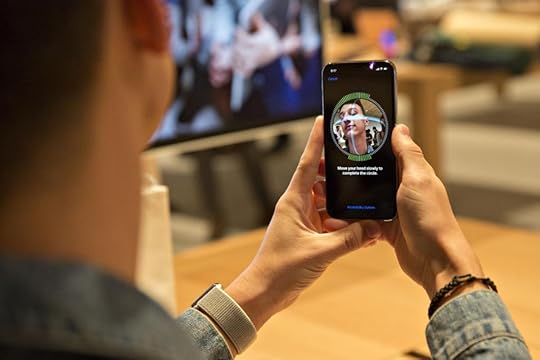
Photographer: Daniel Acker/Bloomberg
The inclusion of facial-recognition software in personal devices, such as the iPhone X, is expected to accelerate the mass adoption of the technology, and that could change how people shop. More than 1 billion smartphones will include facial-recognition features in the next two years, predicts Counterpoint Research — that’s 64% of all smartphones in 2020, compared with 5% in 2017.
Consumers already are recognizing the technology’s value. More than half (54%) of Americans plan to use facial recognition to protect their personal data, according to research by FaceFirst, which provides facial-recognition systems to retailers.
But are shoppers ready for their faces to be used for commercial needs? A lot of people shop on their phones, so logic suggests facial recognition could gradually lead to significant changes in the retail experience.
Bridging from theft prevention to personalized marketing entails significant responsibility, however — and the promise that the data will result in surefire experiences and offers.
Say Cheese Burger — The Smile That Pays
Some retailers are willing to prove they are up to the task. The many ways in which facial recognition can be used in retail were on display at the National Retail Federation’s annual expo in January.
The California eatery CaliBurger, for example, is linking facial recognition to its loyalty program, a relatively safe bet since loyalty members have agreed to share personal data with the brand. The software, installed in ordering kiosks, recognizes registered members as they approach, activates their loyalty accounts and, based on previous purchases, can display their favorite meals (and maybe suggest seconds).
Ideally, it will condense transaction times to seconds as well. In a press release, CaliBurger described the technology as a “key stepping stone toward replacing credit card swipes with face-based payments, which is our goal for 2018.”
Also demonstrating facial recognition at the expo were Samsung and AT&T, which use it for aggregating demographics, store-traffic patterns and other data. Intel showcased the software in a candy-store mock-up, where a camera recognized shoppers and then sent store associates their names, past purchases and recommendations for candies that hit their data-defined sweet spots, according to a report in COLLOQUY.
There also are efforts to equip employees with the technology. A smart-eyewear product by the SAP Innovation Lab, detailed in Forbes, can feed employees key customer metrics at a glance. The technology is expected to develop into typical-looking eyewear that can track the human face the same way the internet cookies track shopper browsing sessions.
“Forget recognizing them as explicitly known customers and instead track them as sessions that can be used to build segmentation and sales-cycle analytics,” said Drew Bates, SAP’s head of product marketing.
Recognizing Potential In Store
Regardless of whether the customer is explicitly known, the technology is still prone to creepiness, so its acceptance hinges, heavily, on security capabilities and what it delivers. This could be accomplished through shopper opt-in requirements and reinforced data storage of shopper behaviors — not identities. CaliBurger, for example, emphasizes that the software it uses will not store the facial images.
Actually benefitting the shopper, however, can be tricky since those benefits will have to be evident and in real time. Here are a few ways it can be done.
Bring online and offline experiences face to face. Online shopping has enabled retailers to build thorough consumer profiles by bricking together the activities of various online sessions. They’ve had few reliable methods for understanding how that digital behavior transitions to the physical store, though. Facial-recognition software could enable merchants to connect their customers’ online and offline behaviors and structure boundary-free shopping navigation. The shopper can, for example, order her groceries online and the in-store facial-recognition cameras can produce her order as soon as she approaches.
Express better understanding. Facial-recognition software can collect data that reveals not only basic demographic information, such as age, gender and race, but also the areas of the store where a shopper lingers, how long it takes to choose a particular cereal and — importantly — what mood the shopper’s expression conveys. Walmart has patented technology that would enable cameras to capture shoppers’ facial expressions while in the checkout lines so it could measure levels of dissatisfaction (or, one hopes, satisfaction). These findings, across the board, could enable retailers to finetune their in-store displays and real-time promotions while also localizing the pain points causing those pained looks.
Prevent theft. Theft may sound like a retailer problem, but it trickles down to shoppers. Theft cost retailers roughly $50 billion in 2016, the most recent year for figures, and a lot of those costs are passed down to consumers in the form of higher prices. Theft, particularly when organized, also reduces the availability of certain products. Most shoppers (56%) are open to using facial recognition to guard against crimes such as shoplifting, according to the FaceFirst survey.
With digital devices already putting facial recognition into the direct power of people, the technology is poised to spread dramatically. The role it will play in retail depends largely on how well the industry expresses its intentions, and how well it recognizes the fact that shoppers already know what retailers are thinking. Opening their minds means telling them clearly what’s in it for them.
This article originally appeared in Forbes. Follow me on Facebook and Twitter for more on retail, loyalty and the customer experience.
March 15, 2018
Macy’s Revival Means Plenty Is In Store For Star Reward Members
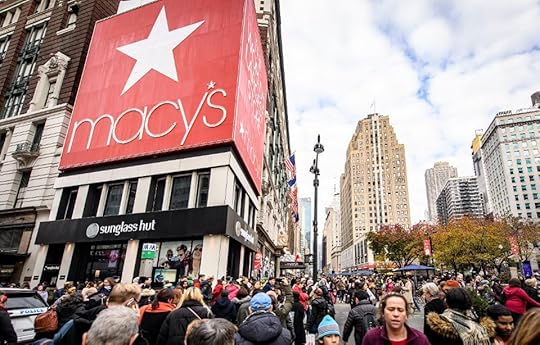
(Photo by Alexander Scheuber/Getty Images)
This is evidently one of the key spokes in the wheel that is turning Macy’s performance around. After relaunching its Star Rewards program in October — with the specific goal of attracting new customers and increasing spending among the 10% who generate roughly half its sales — Macy’s said it would cut ties with Plenti, the multi-retailer rewards program run by American Express.
And now the next spoke is emerging: Macy’s plans to enable Star members to earn points for purchases made on other credit cards. Put another way, non-cardholders can join the program.
Essentially, Macy’s is doing a reverse-Plenti, and counting on the inclusion of other credit cards to boost sales. For a company that generated $160 million from its own credit card business in the third quarter of 2017 — a decline of $4 million from the same period a year before — this indicates Macy’s is finding rewards memberships more lucrative than credit card memberships.
It’s about time. With roughly 1.6 billion retail reward program memberships in the U.S., according to COLLOQUY, Macy’s needs to focus on how to elevate its Star.
Macy’s North Star
When Macy’s in early February said it would pull out of the Plenti program on May 3, it was already waist-deep into a restructuring strategy it calls North Star.
Among the five points of North Star, which include emphasizing Macy’s exclusive brands and optimizing its digital experiences, is using customer analytics to make smart investment decisions. Star Rewards facilitates this, but it needs more member buy-in to make the most of the data.
To that end, the new, three-tiered Star Rewards program focuses on simplicity, with more emphasis on rewarding its best shoppers and less on promotions. For example, it rewards top-spending members ($1,200 a year or more) with 5% back on every purchase. They also get 25% off purchases with its “Star Pass” coupons, with no restrictions — an important distinction since previous coupons were laden with them. (Mid-tier members receive the same perks, while lower-tier members receive the coupons with some restrictions.)
Macy’s will add more enhancements in 2018, including experiential benefits such as winning access to events only Macy’s can offer, the company said.
“Loyalty is a foundational element of our North Star Strategy, and stronger relationships increase the lifetime value of our customers,” Jeff Gennette, Macy’s CEO, said in a press release.
Bad, Good and Plenti
Loyalty is, evidently, more foundational to Macy’s than its credit card business, which has been on the decline. Income from credit operations amounted to $524 million in the first three quarters of 2017, compared with $528 million in the same period a year before. In all of 2016, it declined to $736 million, from $831 million in 2015.
Focusing on its own Star Rewards appears to be the alternative to its credit business, and to venturing further out with Plenti. The program has been slow to catch on with consumers, according to reports. More important, the new Star enables Macy’s to more directly engage with its shoppers and offer tailored experiences that generate brand loyalty, versus a hunt for deals.
In its defense, the Plenti model is new to U.S. consumers. The multi-retailer program enables members to earn points by spending with a number of participating partners, including Macy’s, Enterprise Rent-A-Car and Hulu, and redeeming those points across the same network of brands. Such programs, also called coalition programs, are more common outside the U.S.
Making a Star Rise: 3 Principles
Soon, by enabling Star members to use any credit card to pay for their Macy’s purchases and earn points, the retailer appears to be introducing its own form of multi-tender program. But to resonate with shoppers and establish genuine loyalty (not discount addiction), it will need to adhere to three critical principles.
Make the brand (not the program) the love interest. Too many programs reward or attempt to build emotional connections with their members through transactions alone. Macy’s, by focusing on its exclusive labels, unique experiences and well-integrated digital presence, is bolstering the brand attributes that make its members’ shopping lives more enjoyable. It’s also distinguishing itself from other retailers that cannot offer the same labels and experiences.
Make redemption fun, fast and surprising. Macy’s gives $10 in “Star Money” to platinum members, which can be used immediately, once they spend $200. The low spending requirement and immediacy are critical since 57% of surveyed shoppers told COLLOQUY they left programs because it took too long to earn rewards. Also, by cutting the restrictions on its Star Pass coupons for upper-tier members, Macy’s is making the redemption experience breezier while lavishing members with a sense of privilege.
Make rewards work harder. By stripping out the deals aspect of Star Rewards, Macy’s is able to focus instead on how the program can solve shopper issues and ease the shopping experience. Further, by allowing members to use other credit cards to purchase and earn points, Macy’s has the potential to gather more reliable, conclusive data, which it can use to improve its merchandise mix, plan store events and train employees. Importantly, the data can help Macy’s time these functions to the ebb and flow of shopping segments.
In the end, the credit for a Macy’s recovery will likely go to a combination of strategic practices. But if Macy’s combines these three principles into its overall North Star strategy, the department store icon could make rewards the rising Star of its recovery.
This article originally appeared in Forbes. Follow me on Facebook and Twitter for more on retail, loyalty and the customer experience.
March 13, 2018
If Kroger Had A Hammer: 7 Ways An Ace Deal Would Change The Form Of Grocery
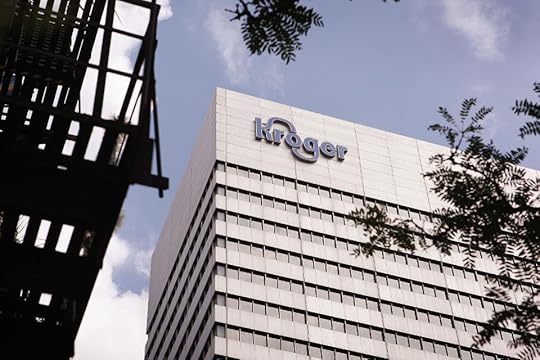
(Photo by Scott Olson/Getty Images)
Ace Hardware may enable Kroger to do what no amount of milk and coupons could: Build a mall inside the supermarket.
Recent reports that Kroger Co. is in talks with Ace to add store-within-store hardware concepts at select Kroger locations hint at more than mere grocery diversification. It appears to be a measured step toward a model that would better resemble a mini-mall within a store. And this could sharply upgrade the typical shopping trip.
Ace would join a number of specialty brands operating within Kroger company stores, including Fred Meyer jewelry stores (Kroger owned), Starbucks cafés, independent restaurants (including The Oyster Bar at its Mariano’s chain) and Murray’s Cheese kiosk shops. In addition, Kroger is rolling out clothing departments in 300 of its stores, distinguished by high partitions, curved aisles and fitting rooms. At many of these same stores, it offers housewares sections featuring a range of needs from cookware to towels.
And Kroger is looking for other alignments. In January, it was reported to be in talks with Boxed, Overstock.com and Alibaba as it seeks an online retail partner. Any such collaboration could lead to in-store digital kiosks through which shoppers could access more general merchandise.
Remodeling the Shopping Trip, in 7 Steps
For shoppers, the ability to buy cordless drills, pearl earrings and sushi in one place is akin to going to the mall, albeit in the Kroger format, a mini-mall. Maybe that’s just what shoppers want, as they opt for quick trips and ordering ahead instead of hour-long shopping journeys.
So how would a mini-mall within a store change the shopper’s path to purchase? Here are seven ways.
1. Anchored store checkouts: Picture a store with turnstile-like entry and exit ways, similar to the new Amazon Go cashier-free store. If multi-tenanted Kroger stores could operate single checkout locations (rather than requiring shoppers to pay each vendor separately), the shopper could buy her hammers, apples, coffee and socks in a single transaction. It would be even faster if Kroger enabled an app that linked all vendors.
2. Specialty-stored data: In time, should Kroger sync its Kroger Plus Card to shopper activities with other in-store tenants and brands, it would be able to obtain a more intricate view of customer preferences and behaviors. Specifically, the combined information would reveal how some brands influence ancillary purchases in complementary categories (a block of cheese leading to a cut of wood for a cheese board, say). Kroger could use these insights to make more on-the-money promotions across brands, to perpetuate the cycle.
3. Seasonal vendors: If it partners with Ace, Kroger would need to establish a protocol for housing third-party merchants. It could further customize its guidelines to suit short-term tenants, such as holiday gift wrapping and shipping services, Halloween costumes and independent chocolate shops. Determining factors would include the strength of the brand in a particular community and whether its lease structure more than offsets the sales Kroger could realize through its own costumes, candy and the like.
4. Temporary vacancies: Look inside any mall and you’ll see dark windows. The more tenants signed, the more likely one may fail or not meet the terms of its lease agreement. If Kroger welcomes outside brands into its stores, it also invites the risks that come with leasing its space. That said, a landlord — or retailer — should be cautious about eliminating a brand based solely on its sales. Its highest-spending shoppers may be making those purchases, and even if they comprise a small percentage of the total, it might not be worth the risk of losing them.
5. Smart shops: This is specific to Ace Hardware but can be applied to other brands. When it comes to certain categories, such as hardware, shoppers rely on staff expertise, and Ace has a solid reputation for it. Ace loyalists would expect the same in a Kroger store so the brands would have to ensure the talent is in place to provide it. (Note that while interactive kiosks could do the trick, older Kroger/Ace shoppers would likely prefer people.)
6. Shopping, complex: Supermarkets like Kroger cater to a cross-section of shoppers covering all demographics, so expectations are complex. Older shoppers might eschew the in-store technologies younger shoppers prefer, such as ordering kiosks, payment apps and self-checkout. Concessions would have to be made to ensure there’s room to please everyone, and that implies physical room since employees fill more space than interactive screens.
7. Stripped mall: Lastly, the shopping trip would likely be stripped of many complexities, though still fluid. If by the year 2020 mini-malls exist within 100,000-square-foot supermarkets and mass merchants, they would adopt fast-evolving retail practices, such as cashless (and cashier-less) checkouts and online-order fulfillment. Tenants could use e-commerce to extend available inventories in small footprints, and online-only merchants could operate lower-cost physical presences where they could provide an offline brand experience, a la Warby Parker or Amazon.
Such technologies will continually shift the floorboards, regardless of whether Ace or Kroger sits upon them. Which is to say malls-within-stores would be just another phase in the ongoing retrofitting of retail, an industry ceaselessly planning for the next, best model, one project at a time.
This article originally appeared in Forbes. Follow me on Facebook and Twitter for more on retail, loyalty and the customer experience.
February 26, 2018
How Major Mergers Are Changing Your Favorite Private Brands
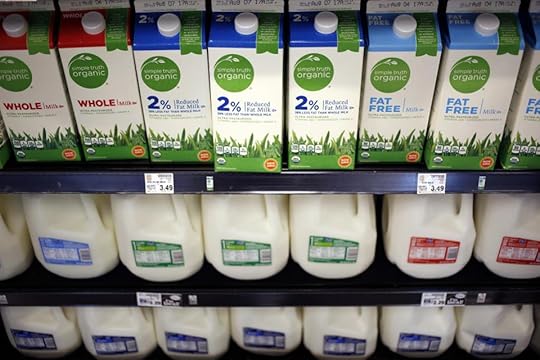
Photographer: Luke Sharrett/Bloomberg
What a difference a day makes. Or, in the case of Amazon and Whole Foods, what a difference a day can make for 365 Everyday Value.
The popular Whole Foods brand is subject to a range of changes now that Amazon owns its parent company. In addition to an endless-aisle presence via Amazon.com, 365 could benefit from new innovations thanks to Amazon’s shopper data, financial resources and talent.
It’s one of hundreds, maybe thousands, of private label brands that are rapidly becoming the stars of supermarket shelves in an estimated $166 billion market. From Trader Joe’s portfolio of in-store labels to Kroger’s Simple Truth, private brands have gained the power, and trust, to influence a shopper’s store choice. But when a retail chain is acquired, what is to become of that brand?
In the case of Whole Foods’ 365 Everyday Value, the outlook for brand loyalists is bullish. By January, it ranked as Amazon’s second bestselling private-label brand after AmazonBasics. But the fate of other private labels in a merger, especially smaller brands, really comes down to their fit and performance in the newly combined product portfolio.
Which could lead to a good deal of infighting among mixed-brand families. A good 85% of consumers said they trust private brand products at least as much as national brands, according to the 2018 Private Brand Intelligence Report by the retail services company Daymon. The bonus for retailers is private labels generate better margins.
Private Matters
However, when shelf space is limited, choices are forced, and opting to stock one brand over another entails the risk of alienating shoppers. Replacing a national brand of milk with private label may be okay, but unshelving a national detergent brand may not sit so well with many shoppers.
Hence, more innovation has enabled private brands to better compete. Here are three key areas where retail mergers are causing major changes in private label, and therefore the shopping basket:
They can change shopping destinations. An acquisition can sharply broaden access to a once hard-to-find private label, as in the case of 365 Everyday Value. The result is more people try these brands and grow to trust them. And then they seek them out — 53% of shoppers would choose a store specifically for its private label, the Daymon study reports. So more retail segments, including discounters and dollar stores, are getting in on the act. Family Dollar recently announced plans for a new line of private label brands, as well as new packaging. And Walmart-owned Jet.com in the fall released its first private label line, geared toward millennial shoppers, called Uniquely J.
They encourage more innovation. Competition leads to improvements as well as category expansions. Private label lines that are slower performers but show promise will likely be enhanced through innovation, while strong performers will be expanded to explore new territories. For example, shoppers are generally more likely to choose private label foods over private label household items. Kroger is addressing this deficiency by expanding its Simple Truth brand into household categories and relying on its shopper insights to penetrate the market. Specialty merchants, too, use technology to create highly specialized private label goods that help them stand apart. The confectionary chain Dylan’s Candy Bar, for example, uses 3D printers so shoppers can make customized, private-label candies in real time.
Better prices, without compromising: If merged retailers do invest more of their combined cash flow into private label innovations, chances are big-brand products that for generations were seen as untouchable — such as laundry detergent — may soon be competing with in-house labels. The major brands can also innovate, but if the shopper has already been won over by a private label, the national brands will likely be pressured to compete on price — and some already are. Kimberly-Clark, maker of Huggies, Kleenex and other household items, reported its selling prices fell more than 1% in 2017 due in part to competition. But leading manufacturers will need to act fast — 84% of shoppers already believe the quality of private labels is at least as good as national brands, the Daymon report finds.
These perception shifts indicate the days of big brands dominating the shopping cart are under watch, but they also usher in more choice and value for the shopper. Consider that according to the Daymon report, the growth of private labels outpaced that of national brands in the past year, by 4% to 0.5%.
Merger or no merger, retailers are learning to excel at product development, and shoppers are the victors.
This article originally appeared in Forbes. Follow me on Facebook and Twitter for more on retail, loyalty and the customer experience.
February 20, 2018
Your Next Best Job Opportunity Is In Technology — Retail Technology
At the Kroger Co., headhunters are going bananas for technology majors.
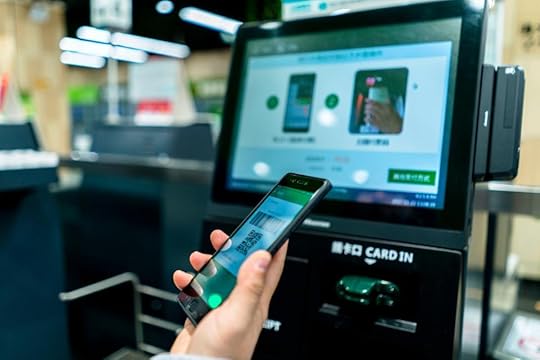
Photo by Zhang Peng/LightRocket via Getty Images
So are talent seekers at Nordstrom, Best Buy, Home Depot and others. Traditional retail positions, such as cashiers, are increasingly being shelved as major brands reduce store numbers and invest in digital integration. And with that shift comes an escalating demand for the technology talent to lead their efforts.
Most retailers have little choice if they want to remain competitive. In the next 10 years, up to 60% of retail jobs will involve new roles or duties, Craig Rowley, senior client partner at human resources firm Korn Ferry Hay Group, recently told the Chicago Tribune.
In short, if retail is going to sell in a virtual handbasket, then this year’s most promising jobs will involve insights, not inventories. For consumers, it means what was once considered a low-paying job is evolving into a long-term career with the potential to determine the fate of many major brands.
Retail Institutes of Technology: Kroger, Nordstrom, Home Depot
The evidence of retail’s tech embrace was tellingly on display at the 2018 National Retail Federation’s annual trade show in New York. The New York Times described the January event as “a conference about shopping that looked more like an expo for tech.”
The challenge, for traditional retailers, is adapting the technology fast enough to win the best talent — and finding the right talent to adapt it. Another hurdle is capturing the interest of unknowing college graduates enamored with digital, more youthful-seeming brands.
A sampling of retailers investing in technology positions hints that many may be trying to catch up after not recognizing the need soon enough:
Kroger in January said it is actively recruiting experienced digital and technology talent both in its corporate offices and in stores. The measure is part of its Restock Kroger program, a $500 million investment in talent over the next three years.
Nordstrom posted openings for nearly 30 technology positions in January alone. Opportunities included data engineers, software engineers and omnichannel inventory managers.
The Home Depot has dedicated a webpage to attracting technology candidates, highlighting career opportunities in seven areas including mobile, data analytics, online merchandising and user experience. A recent search of its “interconnected operations” jobs listed dozens of openings. The page also features Home Depot’s latest technologies from its Innovation Hub.
Tomorrow’s Jobs, Today
The positions these brands and others advertise come under various titles, but can be broken down into three broad categories:
Customer experience leaders: These experts are tasked with coalescing the online and in-store shopper experience. Doing so typically requires aligning company-wide strategies, processes and technologies to the fast-changing needs of consumers, as described by Monster.com. Omnichannel marketing has generated the need for this particular expertise, as merchants strive to produce an indulgent, brand-specific experience that is consistent regardless of channel. Positions can scale from middle management to the C-suite.
Data analysts: Retailers are brilliant at capturing data, but they still struggle with putting it to its best use. Companies in 2018 will need roughly 180,000 people with deep analytical skills, according to predictions by International Data Corporation. An additional 900,000 or so jobs will require data management and interpretation skills. Expect a good number of those positions to be in retail, in the form of customer analytics — dissecting shopper data to identify predictive behaviors, pain points and paths to purchase.
Software developers: All those mobile-ordered shoes and razors are supporting a growing legion of IT professionals, digital marketers and software developers. A study by Glassdoor found the retail industry recorded the biggest increase in software job postings of all industries, up 7.5 percentage points from 2012 to 2017, to 13.9% from 6.4%.
What It Means for Retail and Consumers
For workers and retail employers, the shift means the future of retail is no longer largely in the hands of merchandisers and marketers. In many cases, retail executives are looking to this new talent to dig the path to their future. Today’s software expert could change the direction of retail.
For those who lack a tech background, technology has enabled other opportunities in the aisles. Workers at Walmart will increasingly dedicate their hours to fetching and assembling online orders for curbside pickup. At the recently opened Amazon Go store, which is cashier-free, employees help shoppers troubleshoot technical problems. At Best Buy, workers are assigned to visit shoppers at their homes to offer smart-home consultations. And at any number of stores, staff members may soon be programing in-aisle robots.
However, regardless of the degree to which technology changes careers, the most valued quality among workers will not change. That is the ability to empathize with consumers and troubleshoot their needs. Software can help build machine intelligence, but when it comes to delivering memorable interactions, shoppers still tend to prefer humanity.
This article originally appeared in Forbes. Follow me on Facebook and Twitter for more on retail, loyalty and the customer experience.
February 13, 2018
How Overseas Innovations Are Changing The U.S. Shopping Trip
The latest American product to be made overseas is likely to be the shopping trip.
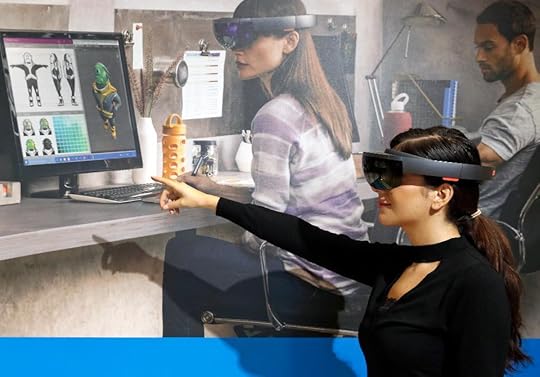
(Photo by Chesnot/Getty Images)
Staff-free stores, delivery robots and body scanners are among the innovations shoppers enjoy in Asia and Europe, and retail brands here in the states are likely monitoring them for success. For this, U.S. shoppers should be encouraged. These far-off ventures could mean that by this time next year a variety of futuristic features, such as the ability to virtually try on clothes from home, will make for a faster, better-tailored and more entertaining shopping trip.
But would it be as effective? Let’s take a peek to find out.
5 Big Innovations, No Matter How You Say It
The most promising characteristic of the leading innovations in Asia and Europe is they can cross borders seamlessly. There’s little cultural designation that would make any of them hard to accept for consumers in the U.S.
1) Can AI help you? In China, staff-free stores including EasyGo, BingoBox and Alibaba’s Tao Café rely on apps, sensors and mobile payment services so busy urban shoppers can grab and pay for items without stopping at a cashier. In the U.S., Amazon opened its cashier-less Amazon Go store in Seattle in January, behind China’s efforts.
2) Do these pants make my avatar look fat? The world’s first virtual store, in which 3-D avatars are created from scans of shoppers’ bodies, opened in South Korea in 2007. At the store, operated by the retailer Shinsegae, customers try clothing on their personalized avatars by scanning the RFID tags of items they like. The information is then encrypted and stored on a smart card.
3) Thank you for the grub-o, Mr. Roboto. In the United Kingdom, the company GoInStore enables shoppers to visit actual stores virtually by streaming live from the viewpoint of an in-store salesperson. Supermarket chain Tesco, meantime, is testing grocery delivery via self-driving robots and also introduced scanners shoppers can use at home to capture barcodes and build shopping lists.
4) Are you eyeing our buns? At the 2016 Retail Asia Expo, the global experiential marketing company TRO demoed eye-tracking technology that enables shoppers to choose products with their eyes. It works by fixing on where a shopper looks on a digital screen and then selects those items. Long used to learn about the shopper’s path to purchase, eye-tracking technology is now becoming interactive. At the expo, visitors built hamburgers by choosing buns and cheeses with their eyes, but the technology can be applied to shop windows, where retailers can offer up information about gazed-upon items.
5) You look like a tall glass of soda. In Japan and Singapore, the company SmartRetail produces touchscreen vending machines that can be managed remotely. Product selection, sales transactions, inventory and marketing videos can be adjusted from anywhere. Clients include Procter & Gamble, Calvin Klein and 7-Eleven. Also in Japan, vending machines take photos of shoppers and recommend drink choices based on gender and age.
Learning, from Alibaba to Tesco
The influence these technologies have on the U.S. shopping trip could be dramatic. In China, for example, retail giants Alibaba and JD.com are wooing brands with innovations that range from location-based inventory management to facial recognition payment systems.
In the United Kingdom and India, Tesco is developing retail innovations in its Tesco Labs, which are dedicated to developing technologies that simplify the trip for shoppers. In addition to delivery robots, it introduced an app that helps shoppers select a wine, based on their planned meal, by interacting with the actual shelf through LED lights.
These projects are helping escalate retail sales in their respective nations. In China, consumers were projected to spend $1 trillion online in 2017 — representing roughly half of the global e-commerce market, according to TechinAsia.com. In the U.K., grocery sales rose 3.8 percent in the fourth quarter of 2017, despite price inflation that threatened to keep shoppers away. Sales at Tesco rose 3.1 percent in the quarter, greater than its three largest competitors.
Why Shoppers Should Be Happy
Many of these technologies are taking form in the U.S. by domestic companies. Amazon recently filed a patent for a mirror that enables shoppers to virtually try on clothes they see on its website. And in California a company called Robomart has developed self-driving mini stores and is reportedly talking with grocers and wholesalers.
Of greater long-term significance is that these innovations are also entering the U.S. beyond the retail aisles. JD.com operates its JD-X robotics research center in Silicon Valley. Alibaba is investing $15 billion in a global research and development initiative in seven global cities, including Bellevue, Washington, and San Mateo, California.
Tesco’s U.S. tie involves Google Home, which takes grocery orders through Tesco’s IFTTT.com program (If This Then That). The program, which automates and interprets customer preferences, can suggest product substitutions and send notices if prices change. It also includes a date-triggering feature that alerts shoppers when they may be running out of detergent or need to order a birthday cake. U.S. retailers, including Walmart and Target, are also partnering with Google Express, Google Home’s shopping service.
It’s feasible to expect an importation of these innovations, as long as shoppers have an appetite for them. All indications are that they do. The real question is whether U.S. retailers can move fast enough, time zones be damned.
This article originally appeared in Forbes. Follow me on Facebook and Twitter for more on retail, loyalty and the customer experience.
Bryan Pearson's Blog
- Bryan Pearson's profile
- 4 followers



